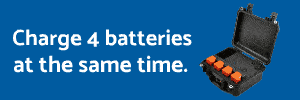Let me preface my questions with my background and experience. I have been working with high accuracy GNSS equipment as a land surveyor since 1990. I also have over 10 years of experience processing airborne trajectories on manned aerial mapping missions and my current business is an aerial mapping company with four Cessna aircraft and large format digital cameras along with LiDAR sensors.
We have decided to add to our fleet with an Autel EVO II with RTK module. I was able to get the RTK working on first try with our state Real Time Network (RTN), but was curious if anyone had more in-depth knowledge about technical details of using RTK on the Autel platform?
My sucess so far (or at least indicated fixed with solid tracking on four constellations) was using single baseline (nearest CORS). Is there any support for network solutions? It doesn't seem that there is any option to tell the onboard firmware what data type the RTN is broadcasting? Single baseline will be limited in usable accuracy to about 20 km, maybe the EVO II is geofenced to not provide RTK over 20 km from a CORS? I have a CORS just a few hundred meters from my house, so haven't had a chance to try and push the limit yet. Also I suppose I could try hooking to a network solution mount point (vs single baseline) and see what happens.
Also it appears that ONLY ellipsoidal heights are logged, no provision for a geoid model?
Documentation seems sparse to non existent.
Any discussion and input from experienced RTK users on the Autel implementation would be welcomed.
SHG
We have decided to add to our fleet with an Autel EVO II with RTK module. I was able to get the RTK working on first try with our state Real Time Network (RTN), but was curious if anyone had more in-depth knowledge about technical details of using RTK on the Autel platform?
My sucess so far (or at least indicated fixed with solid tracking on four constellations) was using single baseline (nearest CORS). Is there any support for network solutions? It doesn't seem that there is any option to tell the onboard firmware what data type the RTN is broadcasting? Single baseline will be limited in usable accuracy to about 20 km, maybe the EVO II is geofenced to not provide RTK over 20 km from a CORS? I have a CORS just a few hundred meters from my house, so haven't had a chance to try and push the limit yet. Also I suppose I could try hooking to a network solution mount point (vs single baseline) and see what happens.
Also it appears that ONLY ellipsoidal heights are logged, no provision for a geoid model?
Documentation seems sparse to non existent.
Any discussion and input from experienced RTK users on the Autel implementation would be welcomed.
SHG




